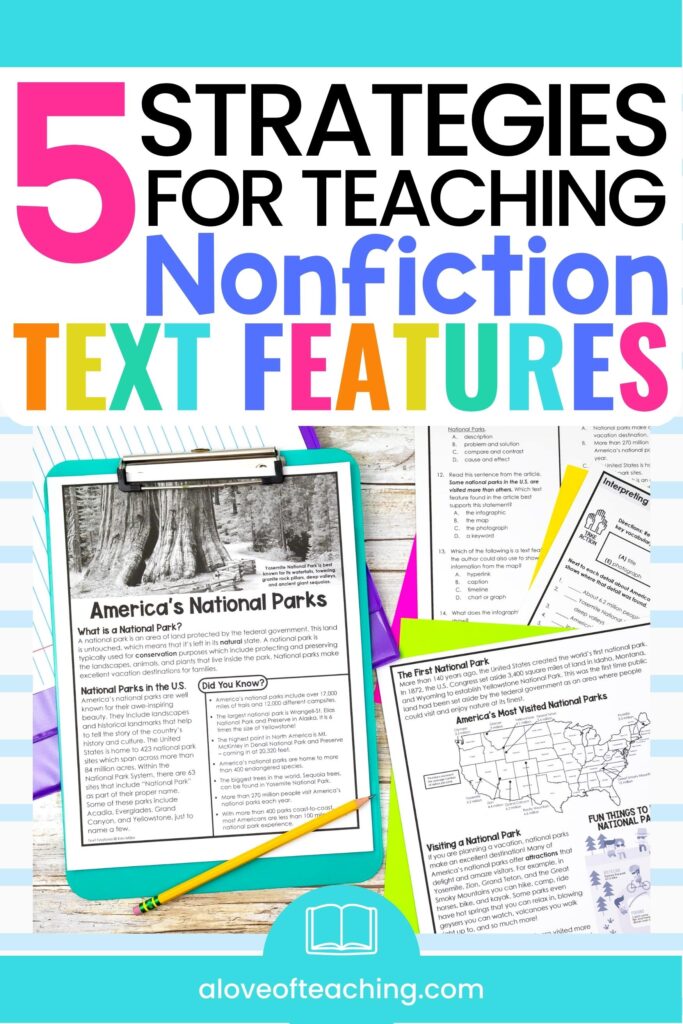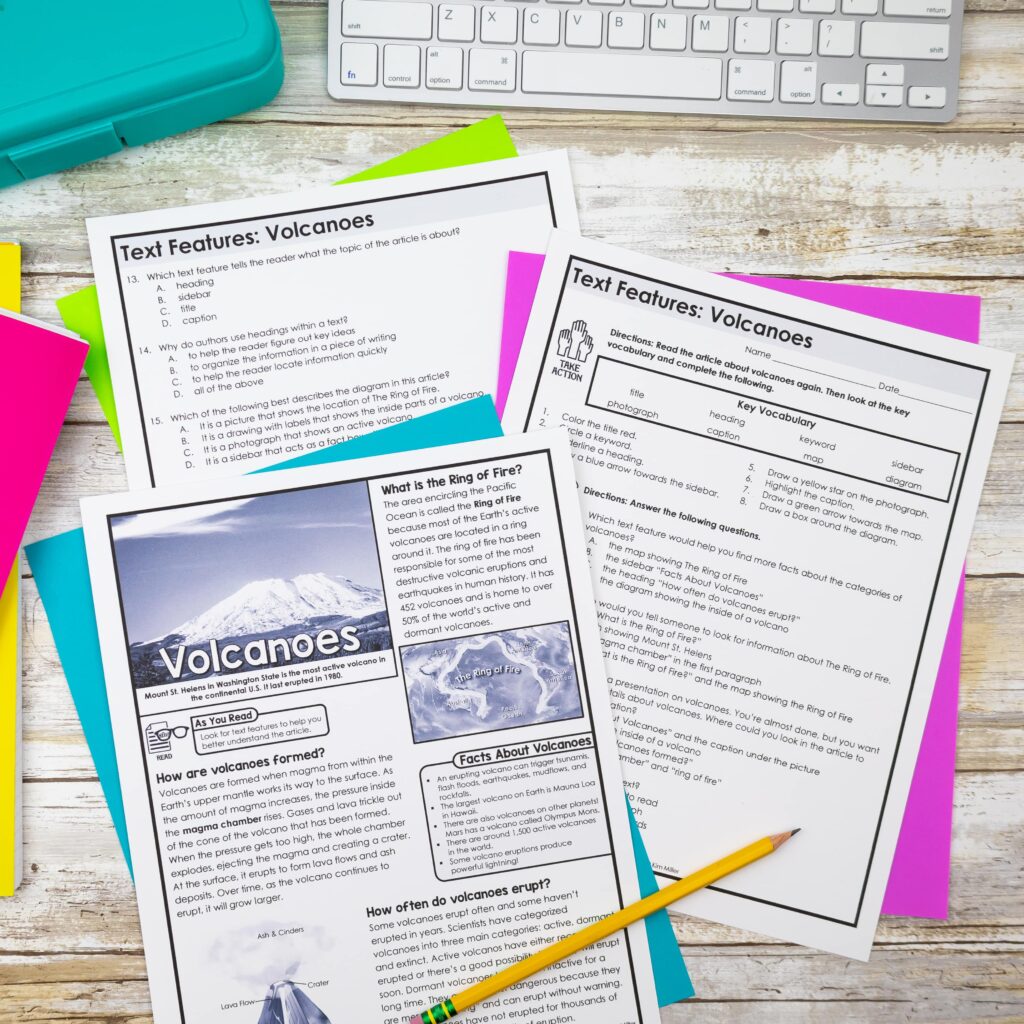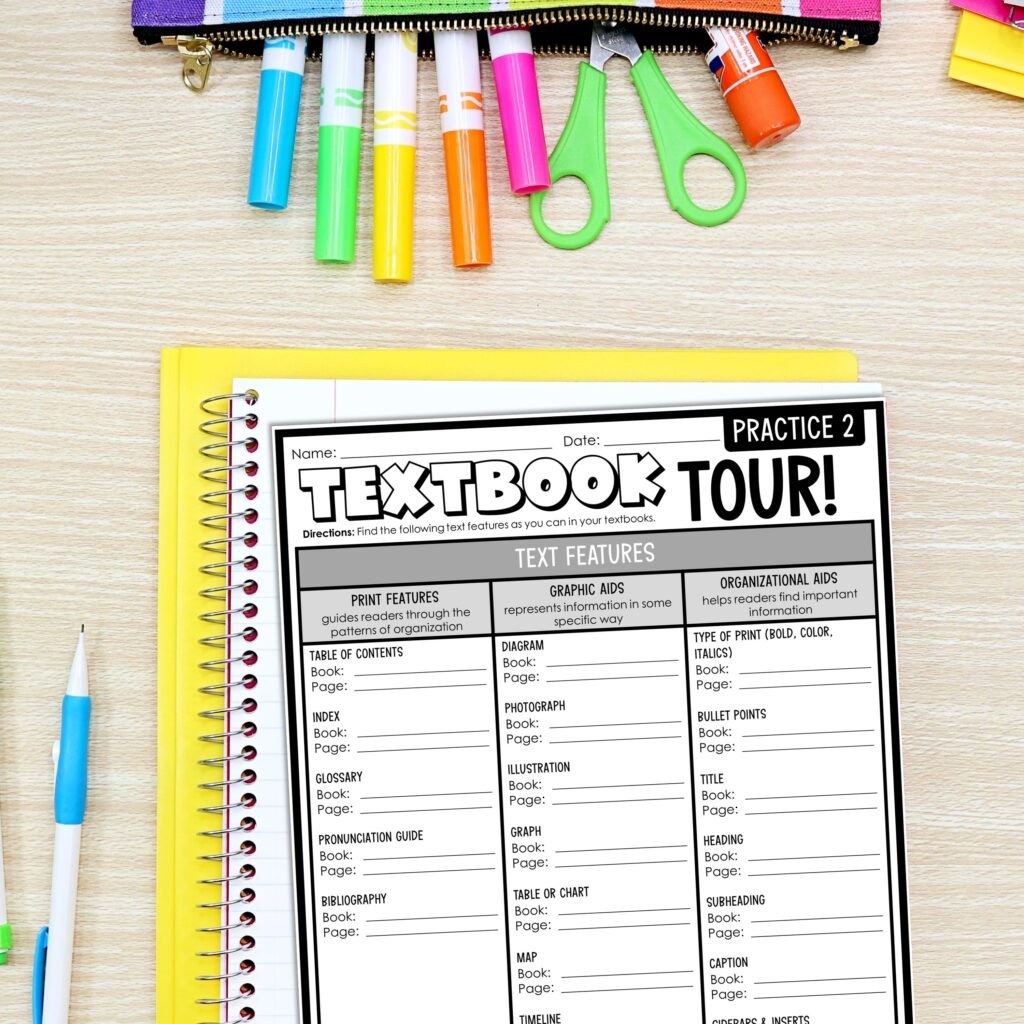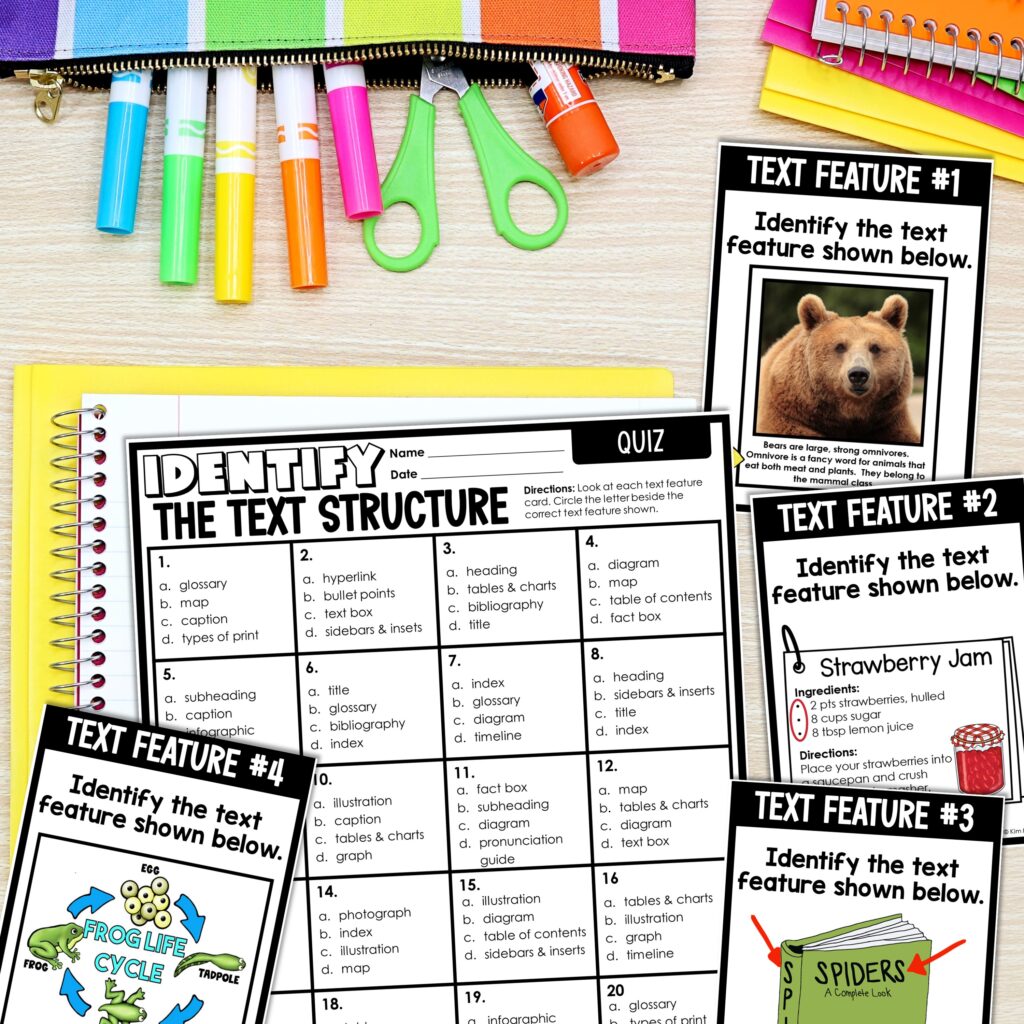Teaching Nonfiction Text Features – 5 Strategies That Work!
Teaching nonfiction text features in the classroom is an invaluable way to expand students’ comprehension, literacy skills, and overall understanding of a topic. Nonfiction text features like titles, labels, and captions give readers additional information that helps them understand a text better. Incorporating these strategies into your lessons will inspire creativity and help students better comprehend their reading. In this blog post, we will explore five effective ways to teach nonfiction text features. These simple strategies will help your students learn how to appreciate and use these helpful tools.

#1 Create and Label Nonfiction Text Features
Introduce students to text features by having them create and label their own. Have students bring in a magazine, newspaper article, or other nonfiction material of their choice. Ask them to identify the different text features used in the piece and create labels for each one. Finding and labeling text features helps students practice identifying various text features while emphasizing their importance for comprehension. You could also try this cut-and-paste activity found in my Nonfiction Text Features Posters, Activities, and Assessment resource. It’s a great way to introduce students to text features found in informational text.
#2 Go On a Scavenger Hunt to Look for Nonfiction Text Features
Going on a nonfiction text features scavenger hunt is fun and educational. Start by gathering some nonfiction books in the classroom. Look for titles, headings, diagrams, glossaries, tables of contents, and index pages. Then, use these to find the answers to questions about the book’s content. This hands-on experience will help students understand how nonfiction books are organized and will give them an understanding of the specific features of each book. Once they get the hang of it, they can create their own nonfiction text features scavenger hunt booklet. This activity is a great way to engage children in learning about nonfiction texts and develop important reading skills. It’s also a fun way to practice searching for information and to increase knowledge retention. With just a few simple materials, you can turn this activity into an exciting challenge that students will remember!
#3 Identify Nonfiction Text Features with a Textbook Tour
Textbooks are an excellent resource for finding nonfiction text features! Have your students use their textbooks to look at the table of contents to see what topics are in the book. Do a textbook tour to look for text features such as captions, bold words, diagrams, and charts. Explain to your students that headings will help them focus on a topic. Graphs and charts will help them see data or facts better. Pictures and illustrations can help students explain the information in the passage. Looking for and identifying these different text features can make reading nonfiction easier and more interesting! By utilizing this nonfiction text features textbook tour activity, students can explore new concepts at their own pace and gain valuable insight into topics they may not have been exposed to before.
#4 Work Together as a Group to Identify Nonfiction Text Features
Encourage group work when teaching nonfiction text features. Working together allows for deeper levels of understanding. Your students will be able to share their knowledge, ask questions, and discuss information with each other. Group activities can also provide a more engaging and interactive learning environment than whole-group instruction. These nonfiction text features task cards are perfect for a literacy center activity. Or, you could use them in groups or with a partner.
#5 Offer Lots of Extra Practice Activities
Use printable resources that offer lots of practice with nonfiction text features. This nonfiction text features resource encourages students to identify text features and explain how they contribute to a better understanding of informational text. These activities will help you teach and reinforce text features found in print and digital (web page) formats. It is a great way to supplement your instruction or provide extra practice for students who need it. Plus, it comes with five different engaging articles and questions!


Teaching nonfiction text features doesn’t need to be boring. There are many fun and interactive ways to engage your students while encouraging an understanding of this type of material. From labeling nonfiction text features to exploring nonfiction books together as a group, there are plenty of learning opportunities available. By following these five simple strategies for teaching nonfiction text features in the classroom, you can effectively help your students develop the literacy skills they need to succeed!
Save these ideas for teaching nonfiction text features!
Make sure to save these fun strategies to your favorite classroom Pinterest board! When it is time to teach nonfiction text features, you will be ready to go!






